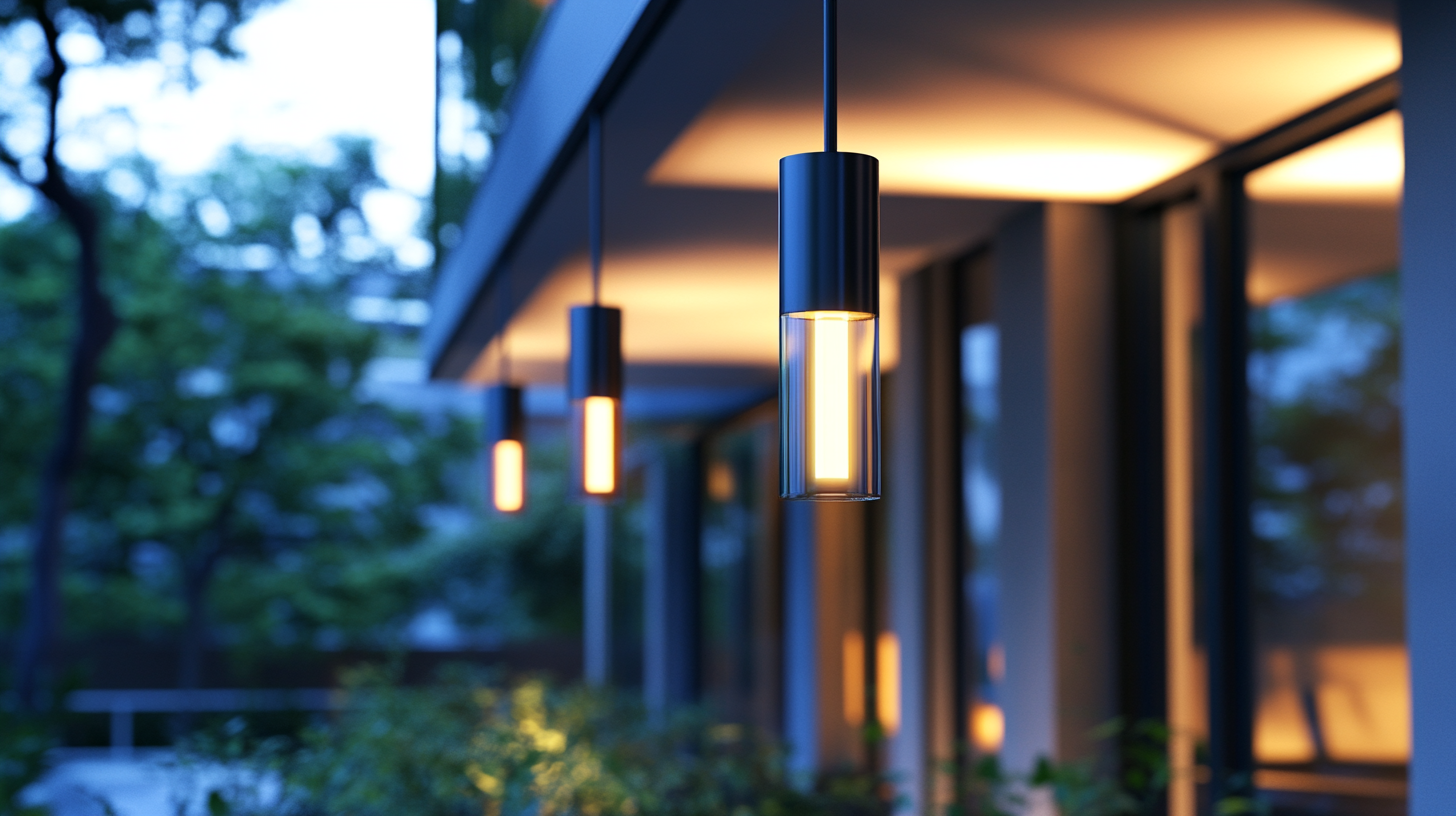Evaluating Smart Led Light Fixtures for Your Global Procurement Needs
In today's rapidly evolving technological landscape, the demand for energy-efficient and innovative lighting solutions has never been greater. Smart LED light fixtures are at the forefront of this revolution, not only providing superior illumination but also integrating advanced features that enhance functionality and energy management. As organizations and businesses expand their global procurement strategies, understanding the benefits and specifications of smart LED light fixtures becomes essential to optimize operations and reduce costs.
The adaptability and potential of smart LED light fixtures make them an attractive option for various applications, from commercial buildings to smart homes. As we delve into the evaluation process, we will explore key factors such as energy efficiency, compatibility with existing systems, and the long-term benefits of switching to smart lighting solutions. This blog aims to provide valuable insights for procurement professionals to effectively assess smart LED light fixtures and make informed decisions that align with their global needs.

Understanding the Basics: What Are Smart LED Light Fixtures?
Smart LED light fixtures have redefined the way we think about lighting, merging energy efficiency with advanced technology. At their core, these fixtures utilize LED (Light Emitting Diode) technology, which not only consumes less energy compared to traditional lighting but also boasts a significantly longer lifespan. Smart features enable remote access and control, often through a smartphone app or smart home system, providing users with unparalleled convenience and flexibility in managing their lighting environments. The intelligence behind smart LED fixtures goes beyond simple dimming or on/off control. Many of these products incorporate sensors to adjust brightness based on ambient light or occupancy. This functionality can lead to substantial energy savings, as lights can automatically turn off when a room is unoccupied or adjust brightness levels according to time of day. Additionally, smart LED fixtures often support integration with other smart devices, allowing for cohesive home automation systems where lighting can sync with thermostats, security systems, and entertainment setups. As you consider incorporating smart LED light fixtures into your procurement strategy, it's essential to evaluate their compatibility with existing infrastructure and the specific needs of your space. Factors such as lumen output, color temperature, and adjustable settings can greatly influence the overall atmosphere and functionality of a room. By understanding the basics of smart LED technology, you can make informed decisions that enhance both efficiency and user experience in your lighting solutions.

Key Features to Consider in Smart LED Light Fixtures
When evaluating smart LED light fixtures for global procurement, several key features must be considered to ensure that you make the right choice for your needs. Firstly, energy efficiency stands out as one of the most critical aspects. Smart LED lights are designed to consume less power than traditional fixtures, providing significant savings on energy bills and contributing to environmental sustainability. It's vital to check the wattage and lumen output to ensure optimal brightness with minimal energy usage.
Another essential feature to look for is connectivity and compatibility. Many smart LED lights can be controlled via mobile apps or integrated with home automation systems. Compatibility with platforms like Google Home or Amazon Alexa enhances user experience, allowing for voice control and seamless integration into existing smart home ecosystems. When selecting fixtures, consider those that support multiple connectivity options such as Wi-Fi, Zigbee, or Bluetooth to maximize versatility.
Additionally, the ability to customize settings for brightness and color temperature is essential for creating the desired ambiance. Smart lighting solutions often provide features such as dimming and color changing, allowing users to adjust the lighting based on mood or occasion. Look for fixtures that offer programmable settings, as these can significantly enhance usability and cater to varying preferences.
Lastly, durability and warranty should not be overlooked. Since LED lights are a long-term investment, choosing fixtures with a robust build and a reliable warranty can provide peace of mind. Make sure to review the manufacturer’s specifications and customer reviews to gauge the longevity and performance of the products. With these key features in mind, you can confidently navigate your procurement process for smart LED light fixtures.

Assessing Energy Efficiency and Sustainability for Global Procurement
As global awareness of environmental issues continues to grow, the evaluation of smart LED light fixtures within procurement strategies has become increasingly critical. Energy efficiency is no longer just a checkbox but a key consideration in streamlining operations and reducing costs. Companies are increasingly recognizing that integrating sustainable solutions, such as LED technology, aligns with both environmental goals and financial objectives. These fixtures not only consume less power but also offer extended lifespans, further contributing to sustainability efforts.
The recent partnership between OSM Thome and SMG highlights a pivotal shift in supply chain management practices, particularly in sectors affected by fluctuating market demands and regulatory pressures. This collaboration serves to optimize procurement processes, ensuring that energy-efficient products, like smart LED fixtures, meet evolving industry standards. By embracing new strategies, such as adopting advanced analytics and prioritizing sustainable materials, companies can enhance their resilience in the face of geopolitical risks and material shortages.
Amid these transformations, the automotive industry’s supply chain management is navigating through unprecedented changes. Traditional models are being challenged as organizations seek innovative ways to address not just profitability but also ecological impact. The integration of smart technologies and sustainable practices is redefining procurement priorities, leading businesses to rethink how they approach sourcing and supply chain optimization in a rapidly changing global landscape. By prioritizing energy efficiency and sustainability, organizations can not only enhance their operational viability but also contribute positively to the planet's future.

Cost Analysis: Balancing Quality and Budget in Smart Lighting Solutions
In the rapidly evolving world of technology, smart LED light fixtures have emerged as a game-changer in both residential and commercial settings. However, when it comes to global procurement, striking the right balance between quality and budget becomes paramount. A comprehensive cost analysis is essential for businesses seeking smart lighting solutions that not only meet their needs but also align with their financial constraints.
First and foremost, organizations must assess the long-term benefits that smart LED fixtures can provide. While the initial investment might seem high, the potential for energy savings and reduced maintenance costs can lead to substantial savings over time. By analyzing the total cost of ownership—factoring in installation, energy consumption, and lifespan—companies can make informed decisions that highlight the true value of these fixtures.
Moreover, quality should never be compromised in favor of lower prices. Opting for inferior products may result in higher failure rates, leading to increased replacement costs and ongoing operational disruptions. It’s crucial to evaluate product specifications, warranty options, and the reputation of manufacturers. A thorough understanding of the trade-offs involved ensures that procurement teams can choose solutions that offer optimal performance without straining their budgets, ultimately fostering a sustainable lighting strategy that meets both current and future needs.
Navigating Supplier Options: Global vs. Local Procurement Strategies
When considering smart LED light fixtures for global procurement, one of the key decisions revolves around choosing between global and local suppliers. Each approach brings its unique advantages and challenges, influencing both the quality and cost-effectiveness of the procurement process. Global suppliers often provide a wider range of products, leveraging economies of scale to offer competitive prices and innovative technology. However, potential downsides include longer lead times and increased shipping costs, which can affect project timelines.
On the other hand, local procurement offers the benefit of faster delivery times and easier communication, which can be critical for projects requiring rapid implementation. Local suppliers are typically more attuned to regional standards and regulations, ensuring compliance with local building codes and sustainability requirements. Additionally, fostering relationships with local businesses can enhance community engagement and support the local economy, aligning with corporate social responsibility goals.
Ultimately, the choice between global and local procurement strategies hinges on specific project needs, budget constraints, and timelines. Companies must carefully weigh the trade-offs, considering factors like product availability, shipping logistics, and supplier reliability. By evaluating these elements, businesses can make informed decisions that best suit their smart LED lighting initiatives.
